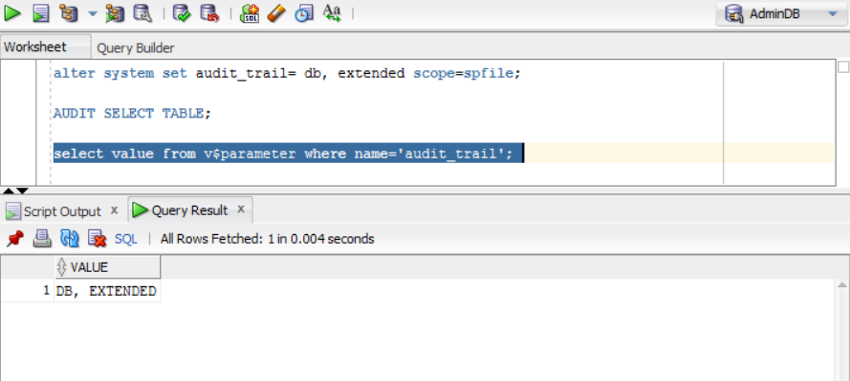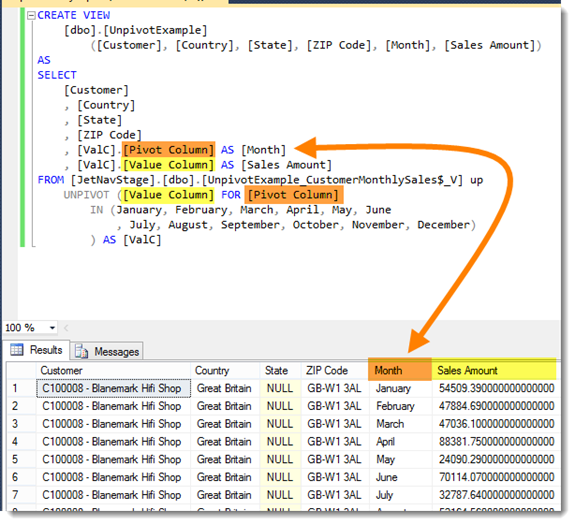
PIVOT carries out an aggregation and merges possible multiple rows into a single row in the output. UNPIVOT ergibt keine Reproduktion des ursprünglichen Tabellenwertausdrucks, da Zeilen zusammengeführt wurden. APPLIES TO: SQL Server Azure SQL Database Azure Synapse Analytics ( SQL DW) Parallel Data Warehouse. PIVOT rotates a table-valued expression by turning the unique values from one column in the expression into multiple columns in the. The SQL PIVOT and UNPIVOT keywords allow you to change your data from rows into columns.

Learn all about SQL PIVOT in this guide. With unpivot I am able to get Name, Marks properly, but not able to get the column name in the source table to the Subject column in the desired result set. How can I achieve this? In SQL , Pivot and Unpivot are relational operators that are used to transform one table into another in order to achieve more simpler view of table.
Conventionally we can say that Pivot operator converts the rows data of the table into the column data. The Unpivot operator does the opposite that is it transform the column based data into rows. Diese sind in der Oracle Datenbank ab Version 11g ebenfalls Verfügbar (Dokumentation).
It provides an easy mechanism in Sql Server to transform rows into columns. To avoid doing this, you can use dynamic SQL to make the pivot table dynamic. The SQL pivot multiple columns will be used in Oracle G and above versions only. If you like this article of SQL pivot multiple columns or if you have any concerns with the same kindly comment in comments section.
I hope you like this article. SQL PIVOT transposes a table-valued expression from a unique set of values from one column into multiple columns in the output and performs aggregations. Datenintegration mit SQL - Teil PIVOT und UNPIVOT.
SQL UNPIVOT performs the opposite operation of SQL PIVOT by transforming. Im Data Warehouse Umfeld gibt es viele gute Softwarewerkzeuge, die beim Aufbereiten, Analysieren und Integrieren von Daten unterstützen. Wer auf diese oftmals teuren Produkte verzichten möchte und seine Daten in einer relationalen Datenbank vorhält, kann mit SQL die. Microsoft SQL Server Dynamisches PIVOT Beispiel Ein Problem bei der PIVOT Abfrage besteht darin, dass Sie alle Werte in der IN Auswahl angeben müssen, wenn Sie sie als Spalten anzeigen möchten. ALSO READ: Dynamic PIVOT in Sql Server.
Congrats on finishing the Advanced SQL Tutorial! With fake datasets to mimic real-world situations, you can approach this section like on-the-job training. Let’s simplify the previous query with the UNPIVOT statement: SELECT PlayerI GameCount, GameType FROM dbo. This SQL Server tutorial explains how to use the PIVOT clause in SQL Server (Transact- SQL ) with syntax and examples. Example Suppose that output of example is stored in a Temp variable.
Now we want to rotate column identifiers Pankaj, Sandeep, Rahul into row values. UNPIVOT relational operator convert data from column level to row level. For this, we use the. It’s possible with this simple SQL Server UNPIVOT function example.
In this example, only the six first months of the year are used as columns, namely January to June. But you can extend the query to all periods of the year by. A PIVOT relational operator is used to convert values of multiple rows into values of multiple columns.
In this blog, let us discuss about converting values of rows into columns ( PIVOT ) and values of columns into rows ( UNPIVOT ) in MS SQL.
Keine Kommentare:
Kommentar veröffentlichen
Hinweis: Nur ein Mitglied dieses Blogs kann Kommentare posten.